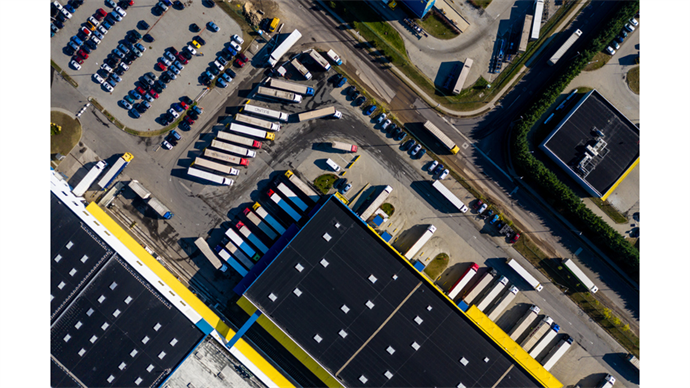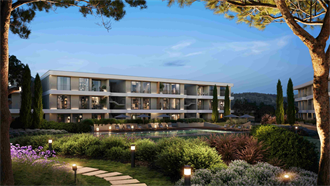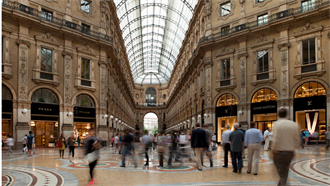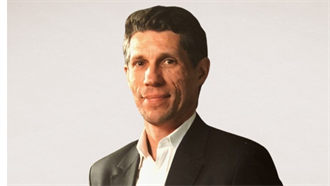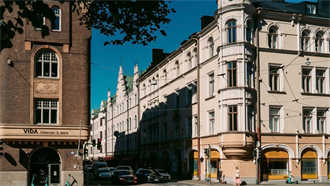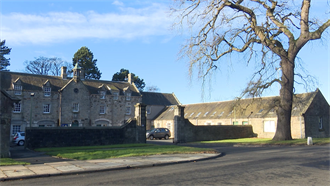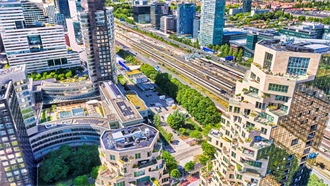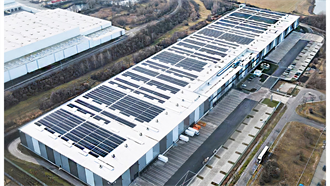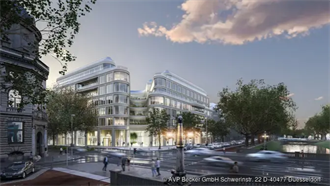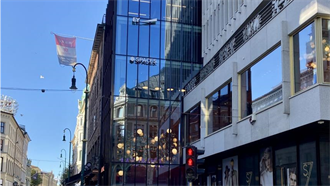After a bumper year in 2020, sustained strong demand for industrial and logistics property in Central and Eastern Europe will fuel further growth in the region, say experts.
Industrial and logistics property might have once been considered the less interesting end of the market, but the events of the last year have catapulted the asset class to the top of investors’ wish lists.
The coronavirus pandemic has done much to accelerate trends which have increased demand for industrial buildings, and in Central and Eastern Europe (CEE), increasing e-commerce penetration and the changing automotive industry in particular are driving demand.
In a virtual roundtable hosted by PropertyEU in March, experts from across the region came together to discuss how the events of the last year have shaped the market, how governments are supporting developers in the region, and what the coming 12 months might hold.
Participants included Luke Dawson, managing director and head of capital markets for Central and Eastern Europe at Colliers; Richard Wilkinson, deputy chief executive of CTP; Martin Polak, managing director for Central and Eastern Europe at Garbe Industrial; Agnieszka Stankiewicz, partner for Warsaw real estate at law firm Greenberg Traurig; and Pawel Sapek, regional head for Central Europe at Prologis.
Bumper year
Among European investors, industrial assets and data centres are currently the most in-demand asset class in the region, outpacing even offices, Dawson said.
‘I suspect that’s the first time that logistics has stepped into the forefront since we’ve been tracking this type of information. There’s a lot of capital continuing to shift from other asset classes, with money moving into real estate that had previously been invested in equities and bonds, for example,’ he said.
‘Looking at CEE, I think one of the very noticeable trends is [logistics] continues to be the most international investment class: four of the top five investors over the last 5-10 years are not European.’
He called 2020 ‘the official coming out party for industrial logistics’, as activity in development, for occupiers and in investment increased.
‘For the years prior to 2020 things had been growing, and there has been a lot of interest in industrial logistics. But I think the coronavirus pandemic accelerated a lot of the trends that we saw heading into Covid-19. We’ve really taken that next step forward, in terms of activity,’ he said.
‘If you look at 2020, within Central Europe there was €3.27 bn traded over that year, which is a 50% increase from 2019 and amounts to pretty staggering growth in terms of the total volume.’
Wilkinson agreed: ‘There were a lot of very positive things driving the logistics industry pre-Covid, and Covid only makes them better. There was a significant acceleration in the growth of e-commerce and in nearshoring.
‘CEE was the part of Europe that grew the fastest pre-Covid, is going to shrink the least during Covid, and is forecast to grow the fastest post-Covid.’
He highlighted that there would be a ‘positive rerating of Central European economies compared to Western European economies’ in a post-Covid world, because of the different trends in debt to GDP levels in the two areas. ‘At least as of now, everything is really good,’ he added.
Prologis had weathered any uncertainty in 2020 by concentrating on its customer relations, Sapek said. ‘From our perspective, last year was really the year of elevating the level of our customer relations, and so we really spent a lot of time with our customers.
‘Compared to Prologis’s Western European operations, CEE has been the most resilient from the occupiers’ perspective. Across our entire portfolio of more than 4.5 million m2 and a couple of hundred customers, only one customer defaulted. In particular, for retail customers, warehouses became the heart of their operations as shops remained shuttered across the continent,’ Sapek explained. ‘Customers began to look to place more attention on supply chain procedures and securing that part of their operation, which resulted in a historically high portfolio retention rate.’
Joint ventures with investors
Greenberg Traurig’s Stankiewicz said there are two major structural elements which have underpinned the market. The first was an increasing number of joint ventures between developers and more opportunistic investors. ‘We see that investors have a lot of appetite; as we all know, there is a wall of capital which cannot be spent, so these joint venture offers are very interesting for our clients,’ she said.
Second, yields for logistics properties have become extremely low thanks to strong demand, particularly from Asian investors. ‘Sales on standing income [logistics] buildings have become a bit crazy. The yields are now better than on core office assets, and the competition is fierce. We have just come out with one of our clients with a quite big asset on the market, and so far 40 parties have registered their interest.’
Elsewhere, build-to-suit (BTS) opportunities are also very popular, particularly if they are with strong tenants, although this part of the market has been more affected by coronavirus than others.
‘At the beginning of the pandemic last year there was a bit of a break on the part of investors, particularly on BTS, because they wanted to assess the covenant of the tenant and how they might be affected by Covid,’ she said.
‘This mostly touched the automotive industry and its related supply chains, as well as retailers.’
Companies are now beginning to look ahead to the end of the pandemic, and 2021 has got off to a positive start, the participants agreed. For Garbe, the CEE region represents as-yet untapped opportunities outside its traditional base of Germany. ‘We are focusing on the Czech, Slovak and Polish markets,’ Polak explained, adding: ‘I wouldn’t like to say anything was a “winner” from Covid – I don’t think it really brings any winners – but I think it is an eye-opener and it is bringing opportunities for those who can be ready for them.’
Adding value
Garbe is concentrating on its returns and working out where it could add value. ‘We are looking at where we can be faster than others or quicker, smarter. We don’t chase market shares or set ourselves targets in terms of deployed million or developed square metres or acquired hectares. We have a different strategy for each country we are in and at the moment we’re mainly focusing on the land bank in the Czech Republic and Slovakia and pursuing our first acquisitions there.’
He said that coronavirus had hampered efforts to secure build-to-suit opportunities and the acquisition of standing assets, because many companies had put their plans on hold. ‘Particularly in the first half of 2020 it was difficult to meet people, and many people who were even thinking and considering doing some development were often simply too busy with their daily operation and with making sure that everyone was healthy.’
While Dawson expected demand to continue into 2021, he thought the make-up of occupiers taking space would be different. ‘If you look at Poland, which is probably the most mature market, you’ve got the most diversification in terms of the occupiers, whether it’s 3PLs [third-party logistics providers], retailers, or e-commerce companies.
‘Whereas if you go to some of the other countries, it is less so: Slovakia is dominated by the automotive sector, so there’s questions around what will happen there, the Czech Republic has much more of a 3PL market compared to some of the other countries, and Romania is still much more focused on the fast-moving consumer goods sector.’
E-commerce growth
Much of the diversification in occupiers is driven by the economic backdrop, he explained. E-commerce penetration in CEE is typically lower than across the rest of the continent, and so could be ripe for an increase in demand in the coming years.
‘I think there’s going to be a large growth segment there, particularly when you look at the likes of Amazon, which at some point is going to actually take up operation [in the region].’
He raised questions over the future of the automotive sector, which is focused around traditional internal combustion engine production. ‘As of now, the internal combustion plants are still there, and the electric factories have almost been an additional sector. But at some point, you will lose the internal combustion factories that we already have in place,’ Dawson said.
For Sapek, the rise of e-commerce, partly due to the pandemic’s restrictions on in-person shopping, will have knock-on effects for the supply chain into 2021.
‘Companies will need to redesign and reprogram the supply chain; it’s a totally different logistics operation for e-commerce retailing than traditional.'
Dawson agreed: ‘One thing we’ve already seen is a lot of the retailers putting longer term plans in place, taking three or four more distribution centres spread throughout CEE which over time they will consolidate into one larger facility that’s going to be much more automated and will serve e-commerce, but also for distributions.’
Last-mile facilities are still limited to major conurbations such as Warsaw and Prague, rather than being spread across the region, Sapek said. As such, it isn’t likely to grow as much as other parts of the e-commerce market this year.
In general, Polak thought the churn of both investors and occupiers would provide opportunities in the coming year. ‘I think these are exciting times for us to come to the market. I think every country has some evolution of the people who are coming in or leaving the market and a change in the people who dominate over time.’
For CTP, this year is also the time to pursue its next phase of expansion. The company floated on the Amsterdam stock exchange in March, in a move aimed at helping it expand its current portfolio from 5.9 million m2 to 10 million m2.
‘We think that now is the right time for us [to list on a stock exchange] having spent 22 years growing organically. We went to the bond markets last year and raised €1.5 bn of green bonds at substantially cheaper funding than the banks. If we can marry that with the ability to raise equity, then we think that that will give us the chance to grab more opportunities to grow,’ Wilkinson said.
Navigating business
But how do companies manage those opportunities when they get them? Day-to-day, property developers and investors need to navigate different political regimes, planning laws and financial rules in the different jurisdictions, the participants said.
During the last year in particular, government decisions have been important. ‘Government help and support during Covid was, I think, weaker in Central Europe than anywhere else in the continent,’ Sapek said. ‘That was definitely challenging for our customers.’
He spoke about the different approaches taken by each planning authority, which can complicate property companies’ efforts to operate across the bloc.
‘In the Czech Republic you have to spend around two years to prepare a new project and obtain a permit before going through a complicated planning permission process. In Poland, you can really finish a building in six months from the greenfield, which sets up totally different dynamics for the market. Then in Hungary, there is a state-owned development vehicle which is our competitor.’
The ability to fast-track development in Poland means it attracts developers, but Sapek also suggested that there is often a lack of transparency on the commercial side, with lease agreements frequently more opaque.
Wilkinson said: ‘I think that Poland is a difficult market. It’s a market that we have always liked, on the one hand, because it’s very big, but we’ve always looked at it and wondered how we are supposed to make money, because there are some business models that are not compatible with ours.’
He said that some operators in the Polish market are keen to ‘make a quick buck’, and whose priority is not building a sustainable destination because each building in a location is owned by a different party.
‘I think that there will come a time where everyone understands that actually, there is value in having people who own, manage, operate, and maintain buildings for the long term, and are not just in it to squeeze money in the short term.’
Polak added: ‘I think Poland has a big advantage which is that everybody we speak to who wants to go into Central Europe actually just wants to go to Poland. It is a large country with a large property market which brings opportunities and customer demand.’
Land constraints
Stankiewicz highlighted another potential pitfall: finding land fit for development. ‘Land needs to be under the master plan or have a planning permit, and most of the land that is being developed for logistics property is arable land, at least on paper.
‘Herein lies a big challenge: in 2015, the government decided that arable land is an inheritance of the Polish people and put limits on the sale of that land to anyone except farmers. So since logistics, except for the last mile, is usually outside of cities, it will be located on arable land. So you need to make absolutely sure that there is a master plan or at least a planning permit.’
She pointed out that even if the master plan is in place, it can sometimes be outdated and at odds with current market conditions. ‘They describe the business and the development on the land which is totally incompatible with what developers want to do. Often it is designated for production because that was something that was important 20 or 25 years ago, but less so right now.’
She agreed with Sapek that a desire to attract development meant municipalities sometimes cut corners in order to agree deals.
Wilkinson said the main thing holding the market back at the moment was a lack of supply. ‘The main players in the Czech Republic, Slovakia, Hungary and Romania are build-to-own, not build-to-sell. So, if you want to invest money in Central Europe, you may want to buy stuff in the Czech Republic or in Hungary or Romania, but you can’t.’
Overall, the participants thought the sector would continue to have a bright future.
Dawson concluded: ‘Central Europe is very much ahead of the curve when it comes to the quality and age of the stock, and some of the technological advancements that are taking place across the region are right at the forefront in a European context. So there are a lot of positive things happening.’
CTP makes debut on Euronext Amsterdam
CTP raised €854.2 mln from its initial public offering (IPO) on the Euronext stock exchange in Amsterdam in March, in one of Europe’s largest property IPOs in years.The flotation, valuing the group at €5.6 bn, is aimed at accelerating the firm’s growth strategy as it looks to enter new markets including Western Europe.
CTP is the largest logistics property owner-developer in the CEE region, which it entered 22 years ago. It has previously raised money via the bond market, issuing its first green bond, of €650 mln, in October 2020, followed by two additional bonds.
Deputy CEO Richard Wilkinson said: ‘We are active in an attractive sector, with high tenant loyalty, and increased business satisfaction. Our pipeline looks great and we are well placed to take advantage of the favourable market circumstances, providing the solutions the markets are looking for.’
ESG factors rise in importance
What tenants want from their buildings has changed, the participants agreed. ‘Five years ago tenants used to be most concerned with location and rent, now they have more questions around ESG considerations, including energy efficiency, lighting and so on,’ Dawson said.
Stankiewicz added: ‘Most of the funds right now are really focused on not only investing in good locations, but also in making sure that the building is environmentally and people friendly. A BREEAM Very Good rating is the absolute minimum that investors require, and occupiers are also interested in this.
‘Where you have a competitive process to lease a building, occupiers will ask about the certification, but also about work amenities and social amenities that it offers.’
She said that warehouses have gone from being drab spaces to becoming more like offices, with social areas and hot desking.
Wilkinson spoke about CTP’s drive to reforest areas of land which it had bought, while Sapek said Prologis’s entire Polish portfolio already ran on 80% green energy and that smart metering was standard across the CEE portfolio, enabling customers to efficiently and cost effectively monitor their energy consumption. ‘You want to do everything right and you don’t want to be behind others,’ Polak added.
Virtual tours ‘have their limits’
The coronavirus pandemic has forced the property industry to be more creative when it comes to arranging viewings of buildings.Stankiewicz spoke about virtual tours to allow
potential investors to view a building even during the height of restrictions, while Dawson said his team had used a camera to take Asian clients on a remote viewing.
‘There is a limit to it, I think. It doesn’t work for certain investors and it doesn’t give you enough of a sense of the surroundings, so I think it’s a bandage rather than a long-term solution,’ he said. ‘I think investors will ultimately use local advisors which can go on their behalf. But we have seen cases where investors have hired private aeroplanes to fly to Warsaw or Prague for three hours.’

